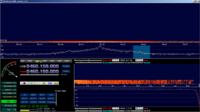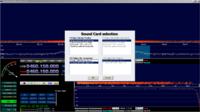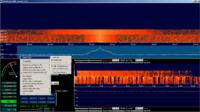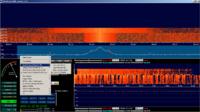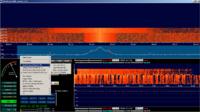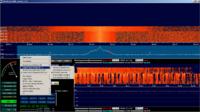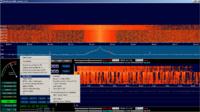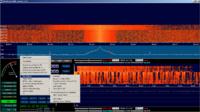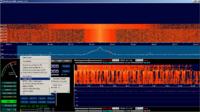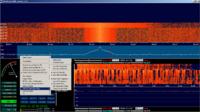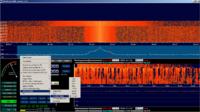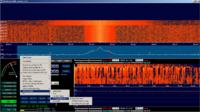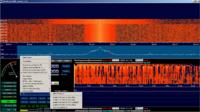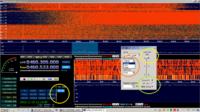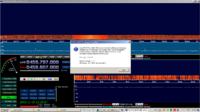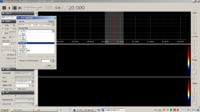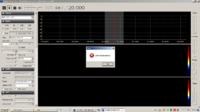For DVBT, I have a signal quality of 90> 100%, strength 100%, all muxs (ATZ antenna, no amplifier, balun with filter). I have already managed to set the tuner. He flashes like crazy! The problem was the frequency of the sound card. It was set to 48000Hz by default and everything sounded tragic. I accidentally set it to 192000Hz and now it's great. In truth, a little quiet and you have to listen, but now it works. I listened to "the city" a bit and in a moment I'm going to get my towel! Those who listen know what's going on (460MHz with chunks). A real wonder that's all! There is FM radio, there is DAB +, it even catches audio from TV. As for amateur radio play, I have a little problem. I noticed that "who and who?" Transmit on a different MHz and receive from another. A difference of several hundred kHz.
Is there a chance that such a virtual receiver can receive several frequencies simultaneously?
E.g. 462.000, 462.155, 462.305 and 462.475?
MHz is an example, but this is how it looks like X speaks on one frequency and Y on the other and they can hear each other and I have to jump freq.
Added after 14 [minutes]:
What is the "channel" width in the 440-460MHz band?
Is there any way to "center" the frequency and find the "middle"?
I noticed that the example frequency on which someone is transmitting strongly spreads out. It is heard on 434.100, heard on 434.200, 434.300 ... etc. Over 0.65MHz. This is how it should be?
Added after 1 [hours]:
I have one more request because google speaks English and I don't really understand this language.
If someone could explain to me what the following functions are for - I would be grateful.
NB IF, AFC, NB RF, NR, AGC, NOTCH, Anotch, AGC off,
I remember something about playing 10m years ago, but I don't want to remember it wrongly.
NB IF = Noise Blanc Entry?
AFC - Automatic Frequency Control?
NB RF - I don't know
NR - I don't remember either
AGC - Automatic Gain Control?
Notch and Anotch - I don't know
A few more questions for the end and I promise that this week I won't bother you anymore.
What's better for listening?
Directional ATZ antenna for DVBT or a self-made half H-shaped dipole?
Which cable should be used for a distance of 2.5-3 meters? 50oHm or TV 75OHm?
I understand that the balun (with a filter and without an amplifier) from DVBT is thrown out, right?
Well, what about SWR? Should I worry about it being only on receipt?
Oh, I forgot to mention that I would like to create a directional antenna. I cannot go beyond the edge of the roof of the block, so the antenna must be on the balcony. On the right and left side of the balcony I have several staircases, so quite a wide curtain from the north. Fortunately, I have the south side facing the city.
And the last question: will the DVBT module plugged directly into the USB collect any garbage (interference)? I think that a 100 cm extension to move the module away from the computer is enough, right? I have a small problem when the fan turns on at maximum speed. The noise level, e.g. at 440MHz, increases by a few dB.
Once again, sorry for the pathology. I will try to analyze the information on the club's websites as soon as possible and speak to someone specific who will help you reach your destination in the future.
Once again, sorry for the bluff associated with the funny DVBT decoder, but I hold back strongly before buying a towel. I will be bothered by the TX button at the bank, so I prefer to improve my listening session and wait a few months.
Thanks for all the help.
Added after 7 [minutes]:
PS. I wanted to POKLIKAĆ helpful post on (+) for everyone but it writes me that I'm new and I can't. I will repay you in the future.



